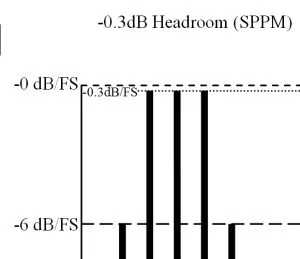Unveiling the Advanced Secrets Behind True Peaks in Audio Mastering – Part 1
I assume that you are familiar with the basic concepts of True Peak (TP) measurement versus the old school Sample Peak Program Metering (SPPM) which was the insufficient predecessor of TP. For those who are not familiar, here is brief summary before we dig into the deeper realms in Part 2:
SPPM came along with the very beginning of digital audio at a time where CD came up and DACs (Digital Analog Converter) were bad and lookahead limiters inexistent. SPPM was enough at that time because early CD releases had quite some headroom of sometimes up to 3dB (SPPM). We are well aware about the fact that digital releases became louder and louder over the decades alongside better DACs and better limiters. This has finally caused digital releases where you can find rows of sometimes hundreds of consecutive samples nailed against digital zero. The downside of SPPM became obvious: The inability to reflect that due to the fact that fixpoint arithmetic cannot reflect anything above zero. No matter how many samples would be nailed against the ceiling, the highest value cannot exceed zero in the world of SPPM and fixpoint, because zero dB is per definition the highest possible value of the system.
At the same time the way consumers play digital music has completely changed over the decades since CD invention from putting a CD into a player which would convert it right away back to analog output to digital ecosystems like streaming services and smartphones where digital audio is heavily post processed. These processes include lossy encoding, gain changes and even equalization. But every digital post processing requires additional headroom where no headroom exists. The demand for a better solution was born. Thomas Lund (at that time technology evangelist for TC Electronic) was one of initial drivers of True Peak measurement which allows to see above zero by the use of 4-times oversampling and interpolation so that a digital master with rows of consecutive fullscale samples would show 0dB SPPM while TP would recreate the estimated wave development if there would be no ceiling and display positive values which sometimes can go up to +6dB TP.


Fig. 1 shows a sequence of 5 samples with 3 consecutive samples at -0.3 dB/SPPM peak headroom. Fig.2 measures the same sequence with the help of oversampling and interpolation. The virtual peak is also often referred to as “Interleaved Sample Over”. The resulting TP is way over 0dB.
These days the majority of mastering engineers are using TP measurement while some still don’t care when they still play the loudness wars to the full extent. Some platforms like Spotify and iTunes among others even recommend a little bit of TP headroom.
Under the line we can make the conclusion that the advent of improved (true) peak metering has helped to gain some quality back into the world of digital audio distribution. TP has definitely helped to mitigate the loudness wars a little bit.
In the next week we will look into some fun facts about the weaknesses of TP metering and a guideline for you to deal with it and improve your decision making process.
Happy metering meanwhile 🙂
Friedemann Tischmeyer
PS: If you found this Article interesting, i would love to hear from you. Don’t forget to share with your friends.



